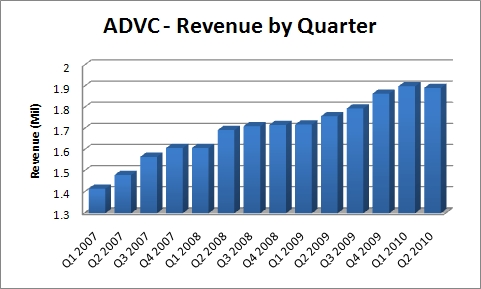In recent posts, I’ve written about the disappearing abnormal returns for additions to the S&P Index and the significant outperformance of S&P deletions after the effective date.
To finish off the series, I’d like to catch up with several recent developments around these trading strategies and examine if the same abnormalities would hold for other indexes as well (namely the Russell 2000 Index).
But first, I’d like to point out some changes related to the S&P indexes…
S&P Discontinues Announcements
Standard & Poors posts news and announcements regarding the various indexes on their website.
Each announcement can be saved as a .pdf file, but the website does not provide an RSS feed for staying up to date.
During the research for my previous posts, I was able to sign up for S&P’s email list in order to receive timely announcements regarding additions and deletions, without having to check the website each day.
Sadly, I received an email on August 3rd announcing that Standard & Poors will be discontinuing their email list:
“S&P is implementing a new policy that will affect email alert communications in relation to index announcements and other index-related matters. Effective August 13, 2010, S&P will provide email alert communications only to subscribers.”
Unfortunately, subscription is not cheap.
Recent Additions
Since my original post, Standard & Poors has announced several changes to the indexes.
On July 8, S&P announced that ACE would replace MIL in the S&P 500 index on July 14.
Results:
- Price on AD + 1 – $54.69
- Price on ED – $55.88
- Outperformance – 0.81%
In addition, two other stocks were added to the S&P Smallcap 600 index on July 8 (ODSY & SXE) for those who would like to continue following this strategy.
Recent Deletions
On June 23, S&P announced that MAG would be replaced by FSS in the S&P Smallcap 600 index due to market cap considerations.
Results:
- Price on ED – $0.92
- Price on ED +20 – $1.09
- Outperformance – 12.22%
The deletions strategy continues to outperform.
Russell Index
A reader comment asked whether the trading strategies detailed in my original posts would also apply to the Russell 2000 index.
While the S&P 500 index is widely used as the “benchmark” for large-cap mutual funds, many small-cap funds compare their returns to the Russell 2000, the bottom 2000 stocks in the Russell 3000 Index.
Russell Reconstitution
As opposed to the S&P index – where stocks are picked subjectively by committee on an as-needed basis throughout the year – stocks are added to the Russell Index using strict rules based on market capitalization.
Rather than replacing stocks throughout the year, the Russell Index is rebalanced once a year during the month of June – an event known as reconstitution – with a preliminary list of additions and deletions announced two weeks in advance.
In 2010, a preliminary list of stocks was announced on June 11, with an official reconstitution date of June 25.
Just like the S&P effect, index funds following the Russell 2000 are required to closely match the index returns – meaning managers must buy and sell indiscriminately around the reconstitution date.
Returns
Academic studies have shown stocks added or deleted to the Russell 2000 show statistically significant returns during the reconstitution period.
In 2010, there were 333 additions and 219 deletions. I calculated average returns below.
Results:
- Additions: 1.23%
- Deletions: -1.90%
This compares to a loss of -0.36% to the underlying index.
Conclusion
Based on these results, there seems to be an opportunity for investors to profit from this annual re-balancing.
However, there are certainly challenges:
- The sheer volume of changes could make a profitable trading strategy hard to implement.
- Differences between the preliminary and final list could leave investors holding stocks that did not make the final cut.
- Several changes to the reconstitution method – including market cap banding and adding IPO stocks on a quarterly basis – have decreased the abnormal returns.
Even with these considerations, there is evidence that the Russell 2000, just like the S&P indexes, experiences an index effect that drags on investment returns.
One study (co-authored by Vijay Singal, the author and inspiration for my previous posts) found that the Russell 2000:
“underperformed other small-cap indexes by more than 3 percentage points a year in the 1995-2002 period, even though comparable indexes did not entail more risk.”
Disclosure
No position in any of these stock at the time of this writing.

